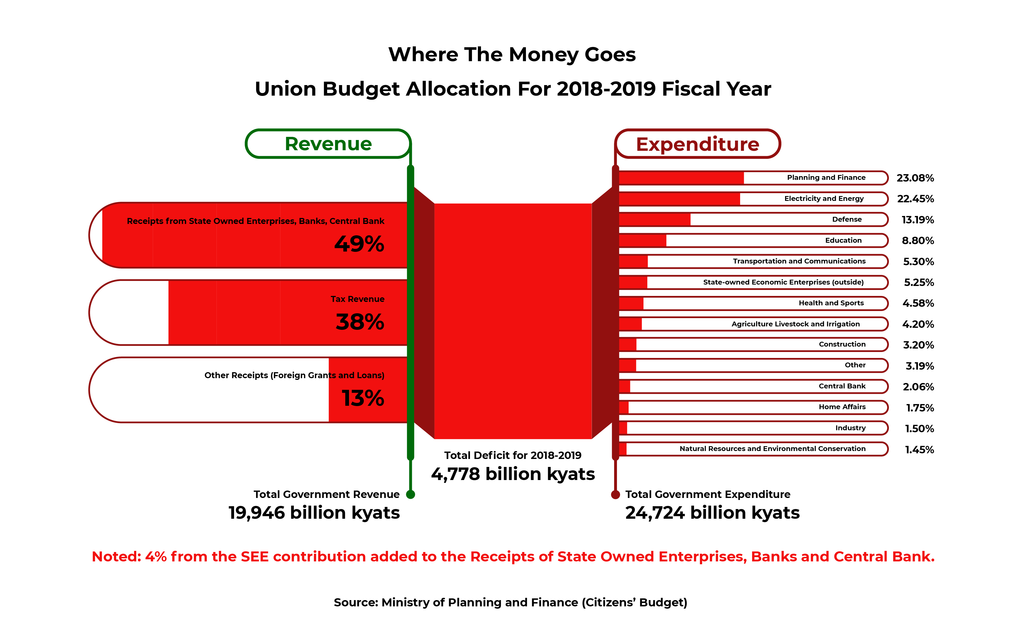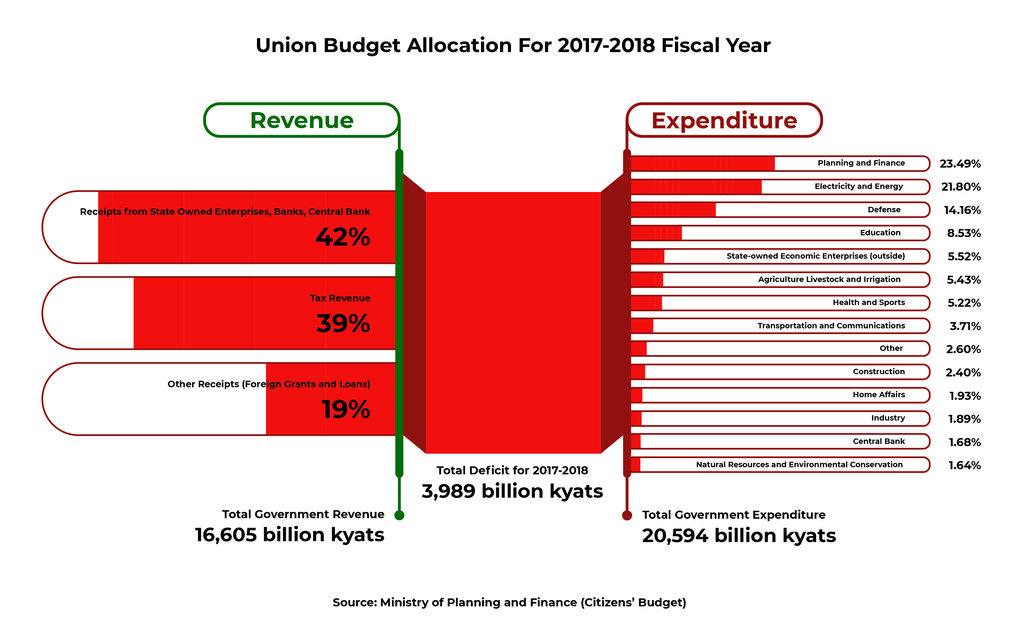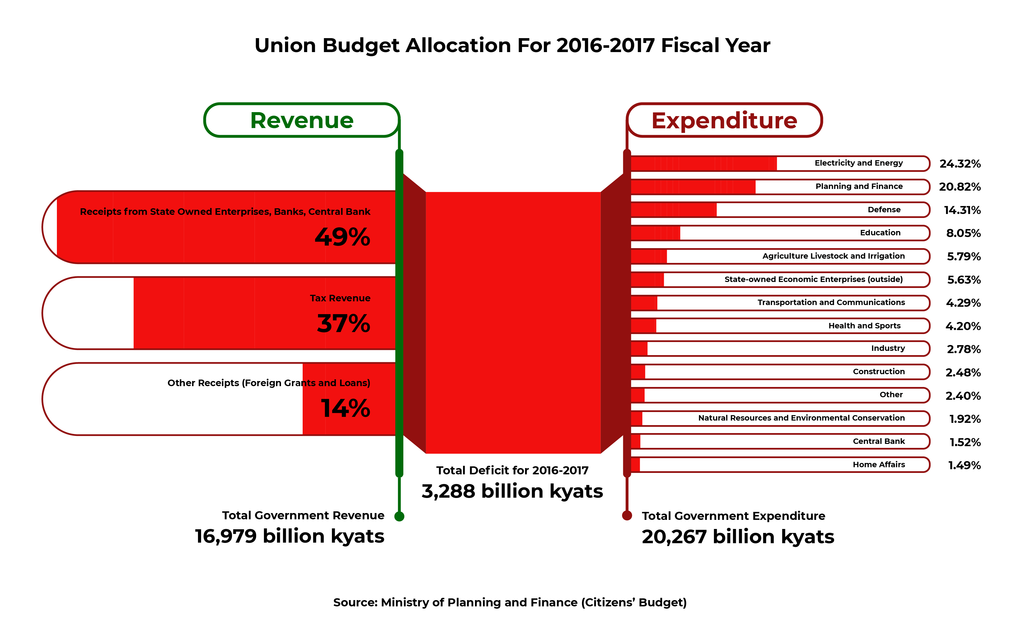YANGON—Making public spending more efficient and improving budget transparency are among the key priorities of the National League for Democracy (NLD)-led government’s 12-point economic plan.
In a bid to reduce government expenditure, the NLD began its administration with 19 ministers heading 21 ministries. There were also eight deputy ministers serving in the ministries of Commerce, the State Counselor’s Office, Border Affairs, Finance and Planning, Foreign Affairs, Home Affairs, the President’s Office, and Transport and Communications.
However, the cabinet has expanded significantly since then. The most recent addition came last year, when the NLD created the Ministry of Investment and Foreign Economic Relations. The government now has 25 ministries led by 24 Union ministers and 20 deputy ministers.
Despite the NLD’s promise to reduce expenditure, budget allocations for Union ministries have increased significantly, while revenue has fallen short of expenditure. The budget deficit has widened yearly, reaching nearly 5 trillion kyats (US$3.26 billion) last fiscal year.
Daw Aung San Suu Kyi’s government allocated the largest share of the budget to the ministries of Planning and Finance, and Electricity and Energy, as they are responsible for long-term economic reform and fulfill the country’s infrastructure needs, particularly for electricity.
Planning and Finance received the biggest share of the budget in both fiscal 2017-18 and 2018-19, while Electricity and Energy was second.
According to parliamentary records, Parliament shaved off more than 400 billion kyats from the government’s proposed budget in fiscal 2019-20 and more than 300 billion kyats in fiscal 2017-18.
For each of the four fiscal years under the NLD, the Defense Ministry has ranked third, accounting for somewhere above 13 percent to 14 percent of the total budget.
Under the NLD government, expenditure on health and education has increased significantly; Daw Aung San Suu Kyi often talks about her eagerness to implement education and health reforms.
According to the Ministry of Planning and Finance’s Citizens’ Budget for 2017-218, expenditure on education increased nearly six times, and expenditure on heath increased nearly 13 times compared to fiscal 2011-12, when U Thein Sein’s administration was in power.
The share of the budget allocated to the military typically ranged from more than 13 to 14 percent throughout the eight fiscal years from 2011-12 to 2018-19.
The Union government’s debt to domestic and foreign creditors has increased significantly under the NLD. Myanmar’s foreign debt totaled about 14 trillion kyats and local debt amounted to about 21 trillion kyats in fiscal 2017-18.
Moreover, Myanmar’s debt-to-GDP ratio has jumped under the current administration, which has increased borrowing from both domestic and foreign lenders to implement infrastructure projects and reform government departments, while drawing up major economic and national development plans.
In fiscal 2016-17, debt-to-GDP ratio reached 40 percent — the highest level throughout the six fiscal years. However, it declined to about 38 percent in fiscal 2017-18. According to the World Bank, in developing countries, a debt-to-GDP ratio of above 77 percent can slow economic growth.
Recently, the Union Parliament approved the estimated budget allocation to the Union ministries for fiscal 2019-20. According to the official record, the largest budgets were directed to the Planning and Finance; Electricity; Defense; and Education ministries.
In the following graphics, The Irrawaddy breaks down the government’s Citizens’ Budget reports for the past six fiscal years to track government expenditure, revenue, internal and external debt, military, health and education budgets, debt-to-GDP ratio and budget deficits.



Hover your mouse over the visuals for more.
Hover your mouse over the visuals for more.
Hover your mouse over the visuals for more.
Hover your mouse over the visuals for more.
Hover your mouse over the visuals for more.
Hover your mouse over the visuals for more.
You may also like these stories:
The World Bank’s Latest Report on Myanmar: 5 Takeaways on Growth and Risks
Foreign Investment in Myanmar Set to Miss Target: MIC
Myanmar Central Bank Unlikely to Accept Deputy Governor’s Resignation: Sources
















